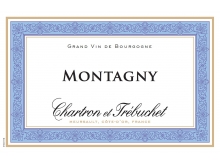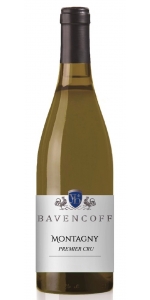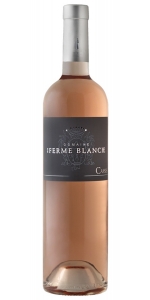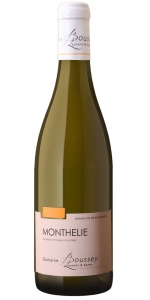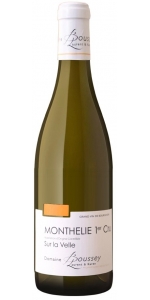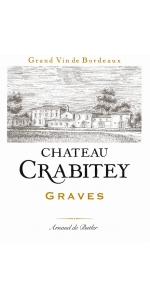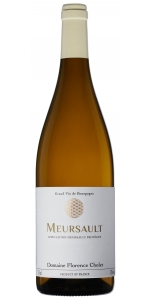Chartron & Trebuchet Montagny Blanc 2020
| Country: | France |
| Region: | Burgundy |
| Winery: | Chartron et Trebuchet |
| Grape Type: | Chardonnay |
| Vintage: | 2020 |
| Bottle Size: | 750 ml |
Bavencoff Montagny Blanc is made from 100 percent Chardonnay.
This Montagny presents a typical robe of a Burgundy Chardonnay: A pale yellow color with discreet green reflections. The color will change to golden yellow with age. On the nose, it develops delicate honey and vanilla aromas. On the palate, this wine is full-bodied, it offers a slightly oily texture typical of the great whites of Burgundy, rich and fresh flavors (vanilla, honey, golden apple, toast). The finish is long and mineral.
This wine goes perfectly with veal in sauce, scallops in butter and herbs, and most fish. Also to drink with hard mountain cheeses: Comté, Beaufort.
Ferme Blanche Cassis Blanc is made from 40% Marsanne, 20% Ugni Blanc, 20% Clairette, 10% Sauvignon Blanc and 10% Bourboulenc. .
The wine has a pale golden color and offers subtle aromas of citrus fruits, peach and apricot, and floral notes of acacia and linden. Crisp and lively on the palate, good tension and length and a refreshing finish.
Sea stews, shellfish, traditional fish and chips, octopus salad.
Boussey Monthelie Blanc is made from 100 percent Chardonnay.
The name Monthelie comes from Mont Lyoei, mountain of Bacchus.
The Boussey Monthelie Blanc has a nice pale yellow color with green reflections. Aromas of white flowers, fresh almonds, lemon and minerality. The finish is long with a very good balance between the acidity and the ripeness.
Goes well with poultry, fish and crab cakes.
Boussey Monthelie Blanc Premier Cru Sur La Velle is made from 100 percent Chardonnay.
The name Monthelie comes from Mont Lyoei, mountain of Bacchus. The "Sur la Velle" plot is located on the eastern edge of Monthélie. It borders the Volnay Clos des Chênes Premier Cru to the east. The vineyards here lie on broadly southeast facing slopes with just enough gradient to achieve good drainage.
The Monthelie Blanc Premier Cru Sur La Velle has a beautiful pale yellow color with green reflections.
It is complex and rich with delicious aromas of white flowers, fresh almonds, lemon and minerality.
The finish is long with a very good balance between the excellent ripeness and the perfect amount of acidity.
We recommend this wine with white meat, fish and seafood.
Chateau Crabitey Graves Blanc is made from 70% Sauvignon Blanc and 30% Semillon.
The finish is long and distinguishes itself by nice and light woody and citrus fruit aromas.In the mouth, the wine is fully developed and complex, with a nice volume as well as a light acidity for the freshness. Its nose is fine and complex - even lemony with its pomelo scent - with some smoky notes. Chateau Crabitey Graves Blanc displays a fine, light yellow color and a nice brilliance.
Pairs with bisque, smoked fish, roasted chicken and vegetables with fresh herbs
Review:
"Fresh, pretty nose of gooseberries, lime zest, lemon and green apple. Light to medium body with sharp acidity. Tangy and citrusy. 70% sauvignon blanc and 30% semillon. Vegan. Drink now."
- James Suckling (January 2022) 90 pts
Florence Cholet Meursault Blanc is made from 100 percent Chardonnay.
This classic Meursault offers expressive and complex aromas of white flower, white fruit, and herbal aromas. Bright acidity and minerality emerge on the palate from this beautifully balanced and structured white, followed by subtle hints of vanilla and toasted brioche nuances in a refreshing finish.
Pair with fresh Truffle Pasta, Beaufort Cheese, Pike Quennelles.
Chartron & Trebuchet Montagny Blanc is made from 100% Chardonnay
The bright acidity found in Chardonnay from this region, mixed with the underlying mineral note, creates a wine that steps outside the boundary of the classic Burgundy Chardonnay. Notes of honeysuckle and spring flowers fill the nose. On the palate, the juice is fresh and lively with flavors of white peach and ripe pear. Rich, refined and delicate with mineral hints pulling together on the finish.
In 1936, the four villages of Buxy, Montagny-lès-Buxy, Jully-lès-Buxy and Saint-Vallerin were joined together to form the AOC of Montagny. The vineyards are located on slopes 250-400 meters above sea level and are oriented to the east and southeast. Yields are 55 hectoliters / hectare.
The south facing vineyards of these villages are known for their pebbled limestone soil, and because of this common soil characteristic, the wines of Montagny are characterized by their slight flinty note.
Its freshness and finesse allow it to be enjoyed as an aperitif. It also pairs well with white meat and sauce. At the sea side, it will be perfect with a plate of shellfish (lobster, scallops) steamed or poached or noble fish just fried, grilled or steamed. Cheeses: Goat cheese, Beaufort Comté, Emmental and more.
The Chartron et Trebuchet Estate
Owners of Premiers and Grands Crus in Puligny-Montrachet since 1859 with the Domaine Jean Chartron, Jean-René Chartron founded the Maison Chartron et Trébuchet in 1984 with Louis Trébuchet, manager of a wine trading company.
Vincent Sauvestre acquired the company in 2004. His objective is to continue to promote the great white wines of Burgundy, whilst respecting and perpetuating the quality work achieved by Jean Chartron and Louis Trébuchet.
The Maison Chartron et Trébuchet specialises in producing great white Burgundy wines. The know-how of the winemakers begins with a radical selection of the very best plots: the highest-quality terroirs of the Côte are chosen and the grapes are carefully monitored throughout the ripening period. Grapes are hand-picked when the balance between acidity and sweetness is at its prime: the fruit must not be too ripe so that the full potential of the terroir is maintained, including its acidity, to ensure that the wines age properly. All of the winemaking is done in casks: the alcoholic fermentation is followed by malolactic fermentation. A proportion of 20 to 40% of new barrels is used, depending on the appellations and the vintage. Wines are left to age for 12 to 18 months depending on the appellations.
The Chartron et Trebuchet Vineyards
Chartron et Trébuchet's vineyards are all planted on Limestone and Clay based soils. In average, the age of the vines is 30 years old.
- back
All older vintage wines have been purchased from a single collectors cellar. Pictures can be requested before shipment.
The Sonoma Coast bottling is a blend of barrels from Ferren's single vineyard offerings; Lancel Creek, Silver Eagle, Volpert, and Frei Road Vineyards. The wine is always somewhat more approachable early in its life as less new oak is used in the blend. Pure and translucent fruit is the hallmark of this cuvée. Citrus, quince, sea spray, and minerals are buoyed by refreshing acidity and a seamless finish.
12 months in barrel, then 6 months in stainless steel15% new, 85% neutral
Tronçais and Vosges forests
100% 4-year air dry stave wood
100% 228 liter François Frères French oak barrels
Review:
"Succulent and fleshy, with notes of apricot pastry, grilled peach and salted butterscotch, along with fresh acidity, plus details of lemon zest, tangerine and lime sorbet. Fresh ginger and white tea linger on the long, expressive finish alongside a touch of chewy dried mango. Drink now.—M.W.” - Wine Spectator (May 2025), 93 pts

